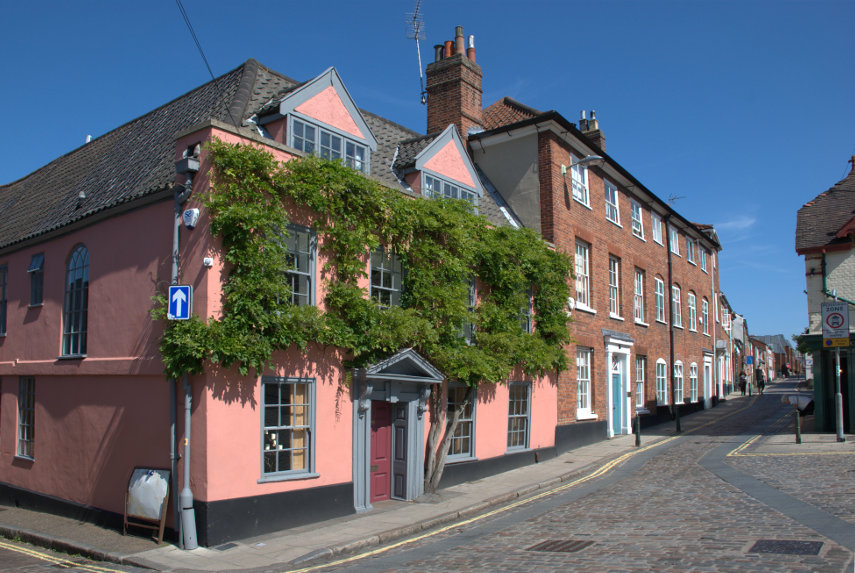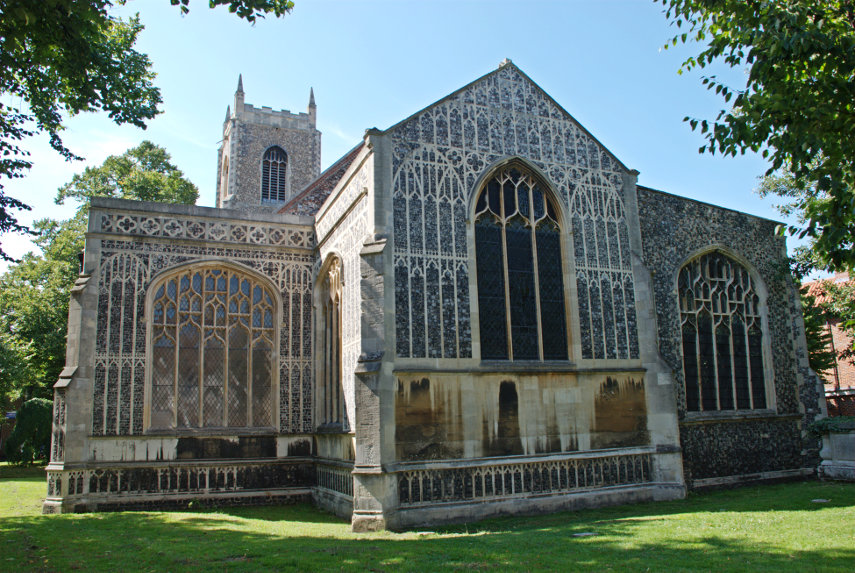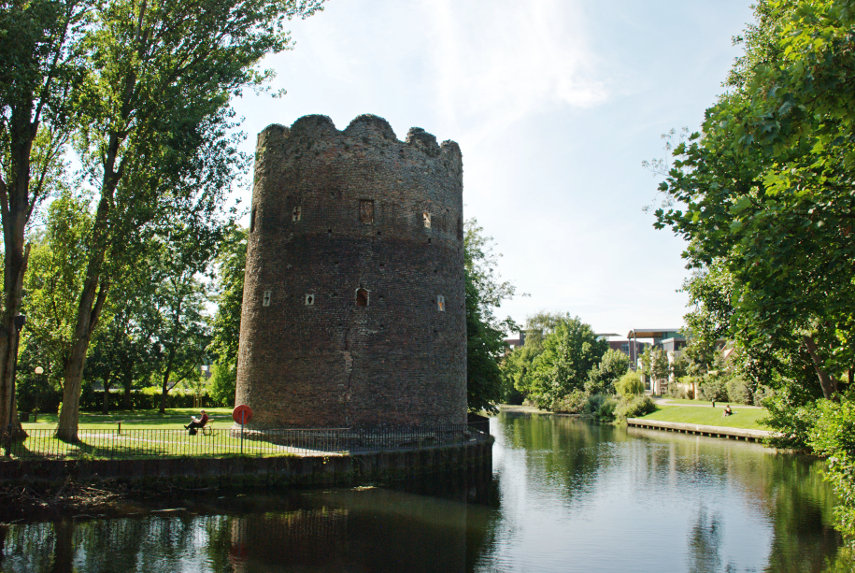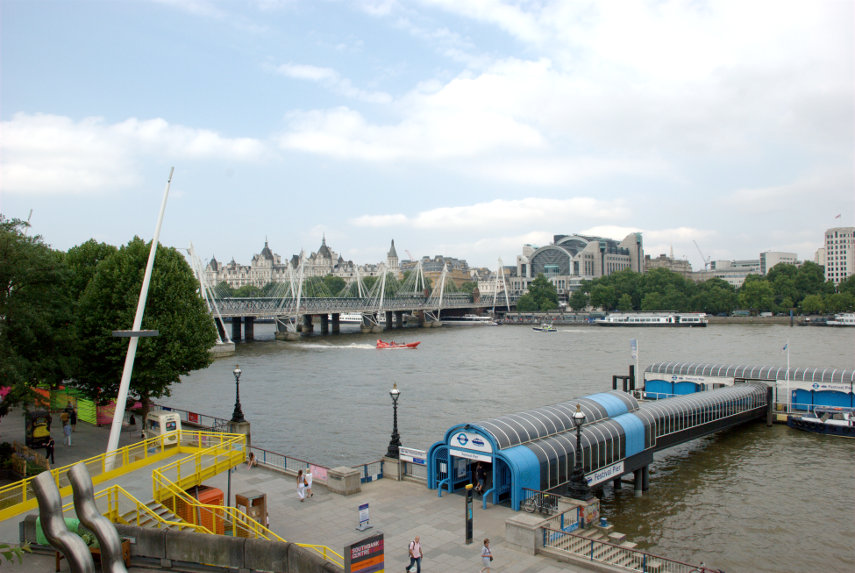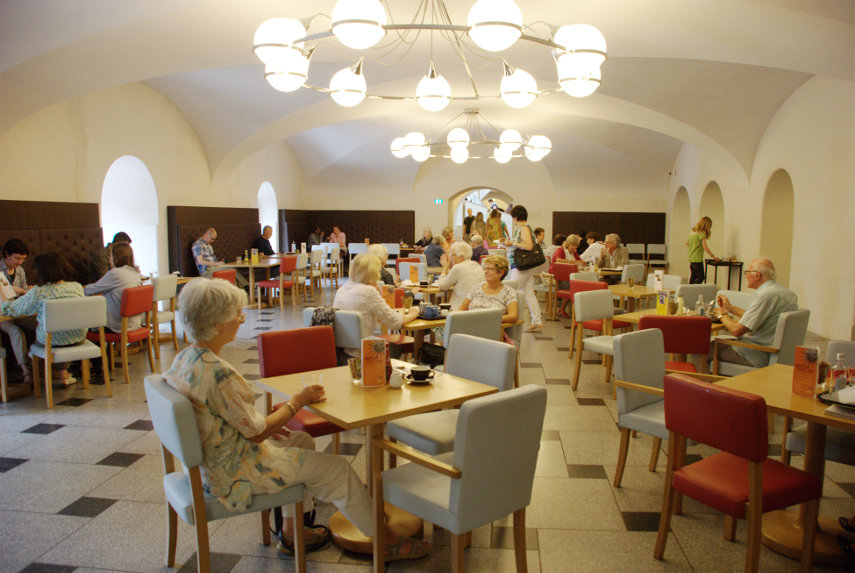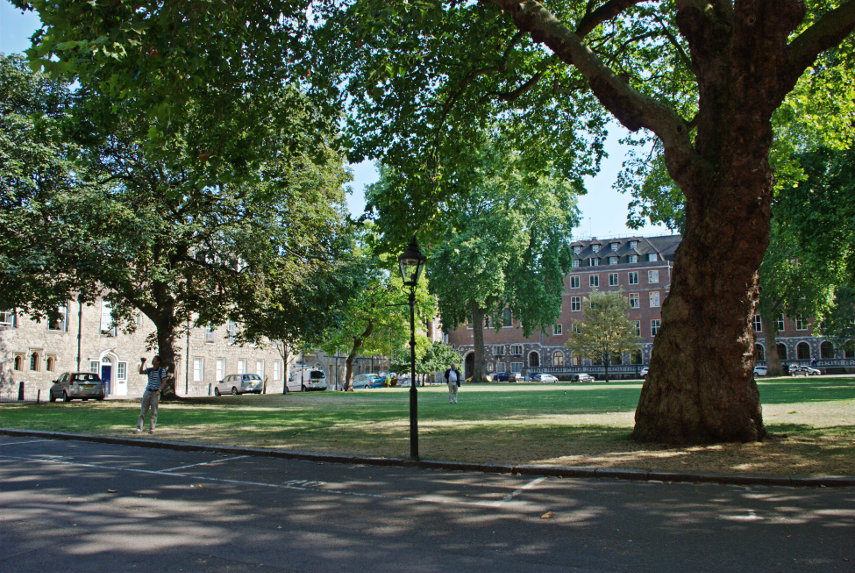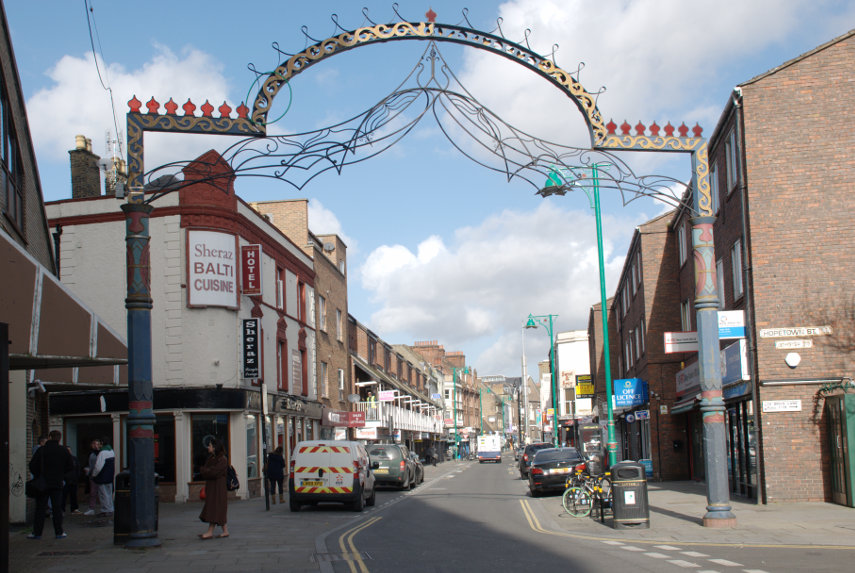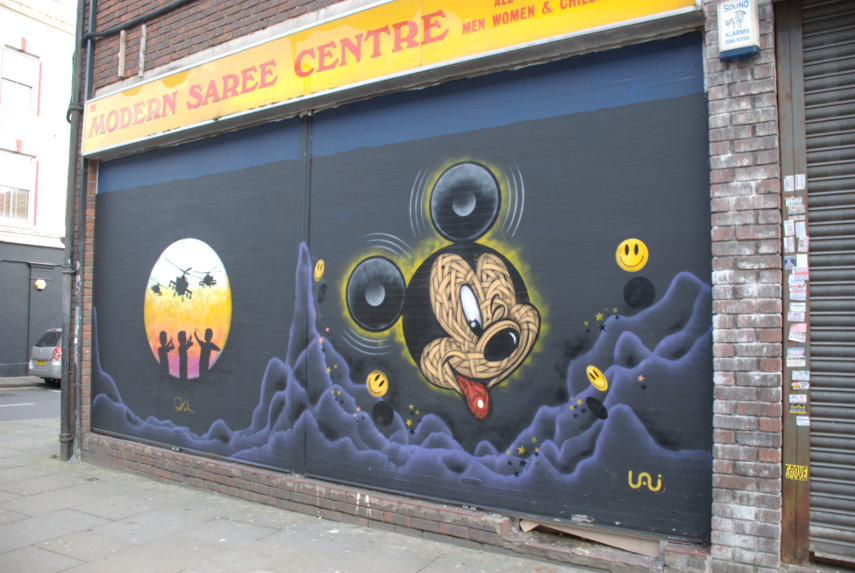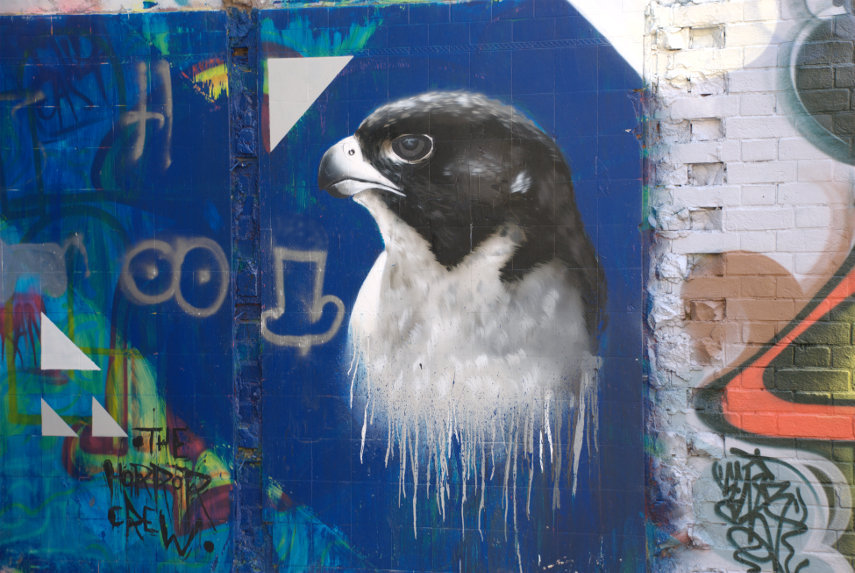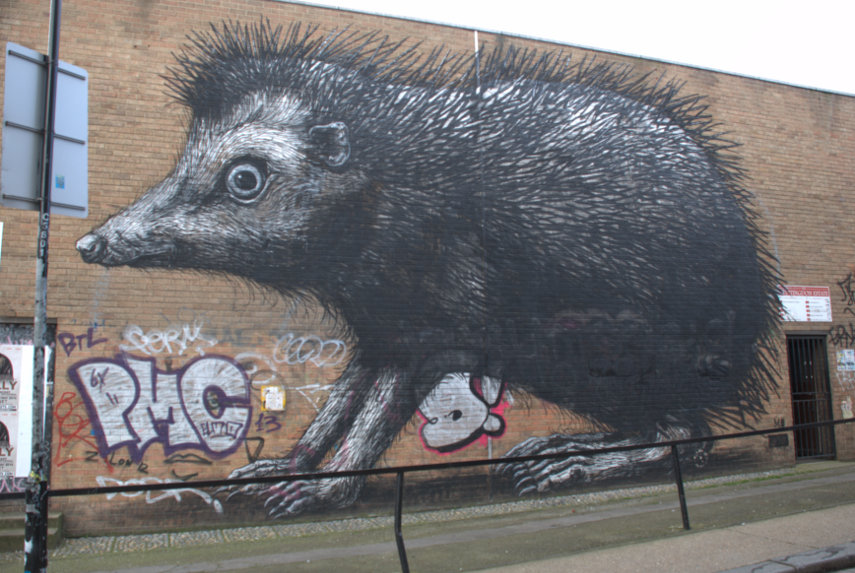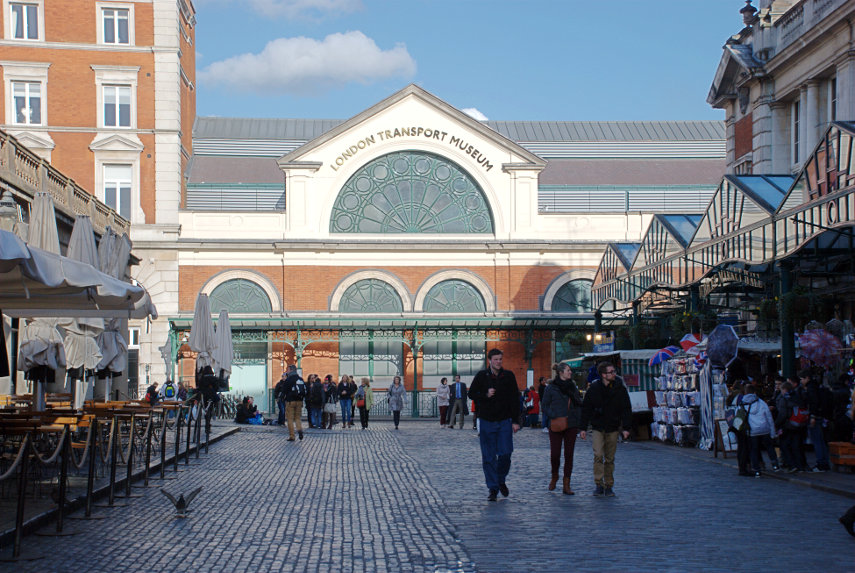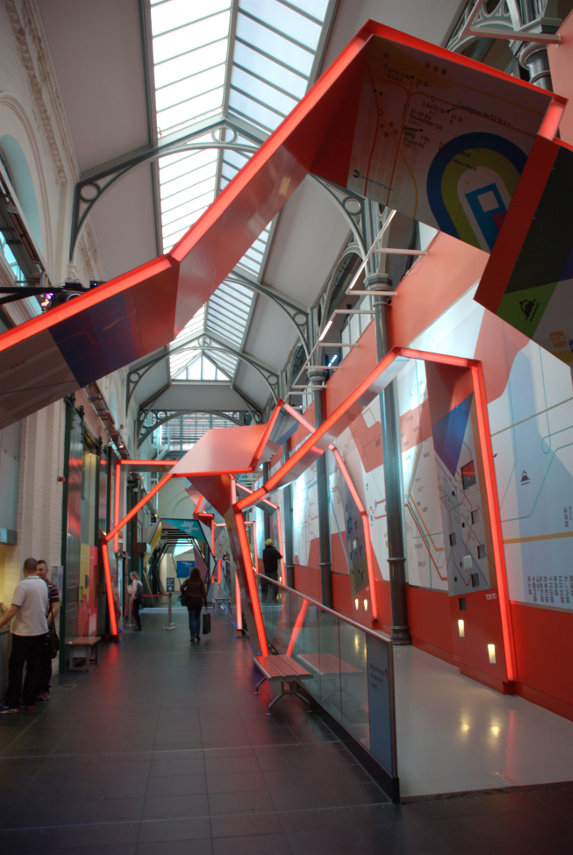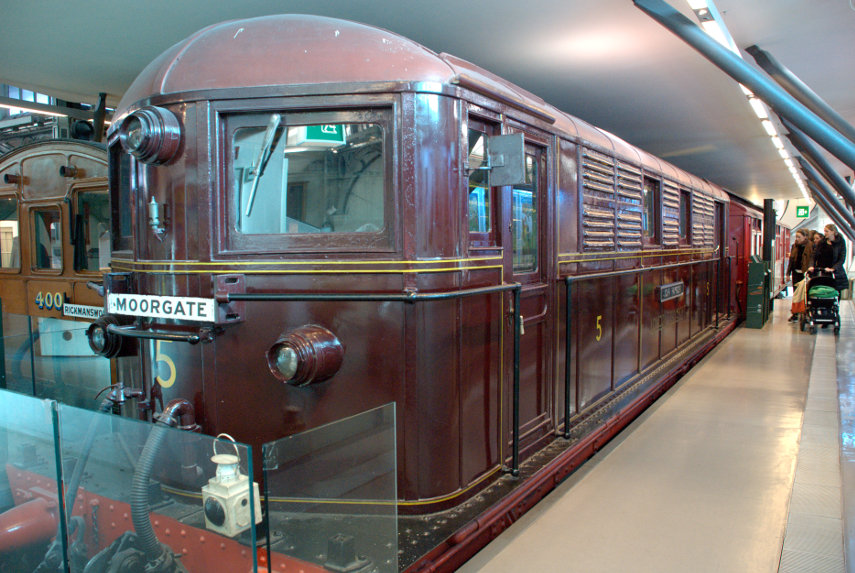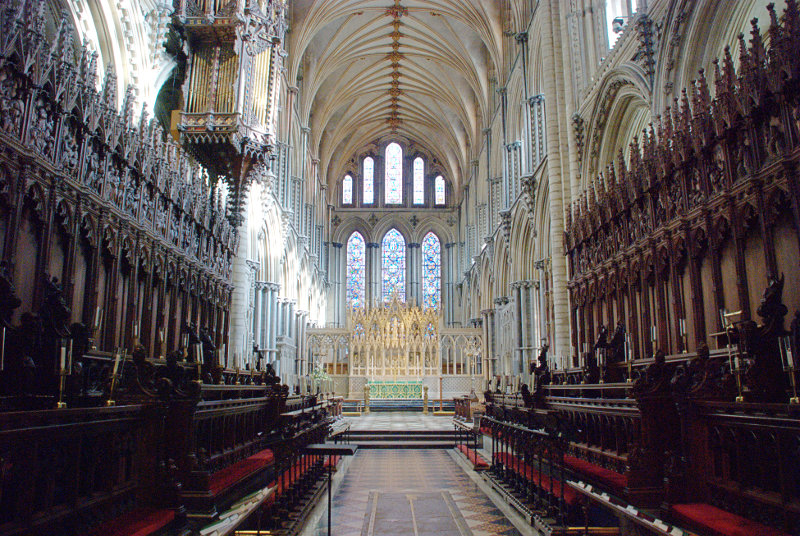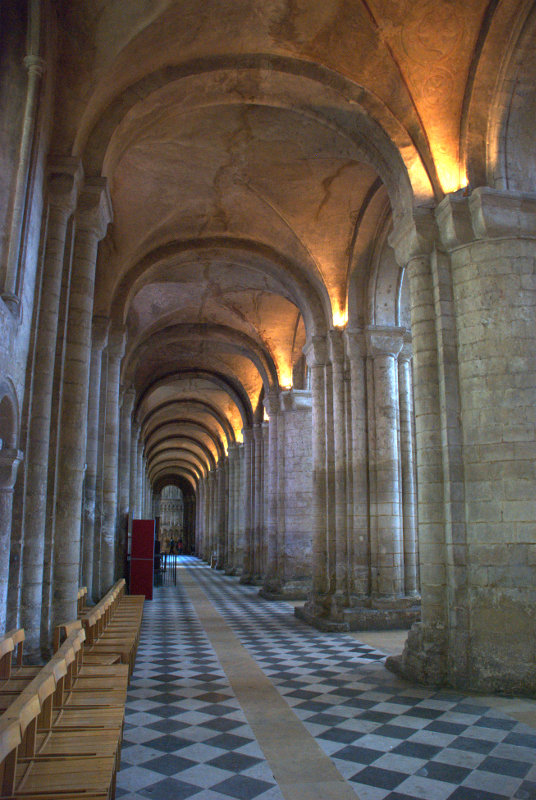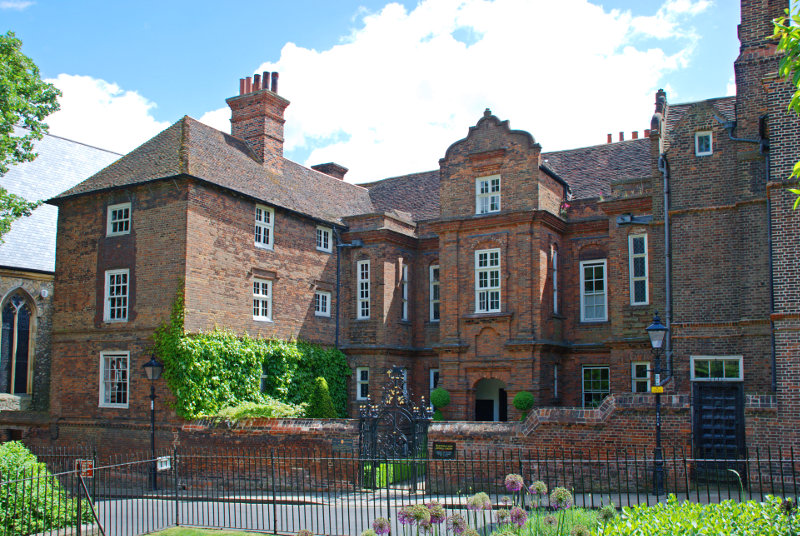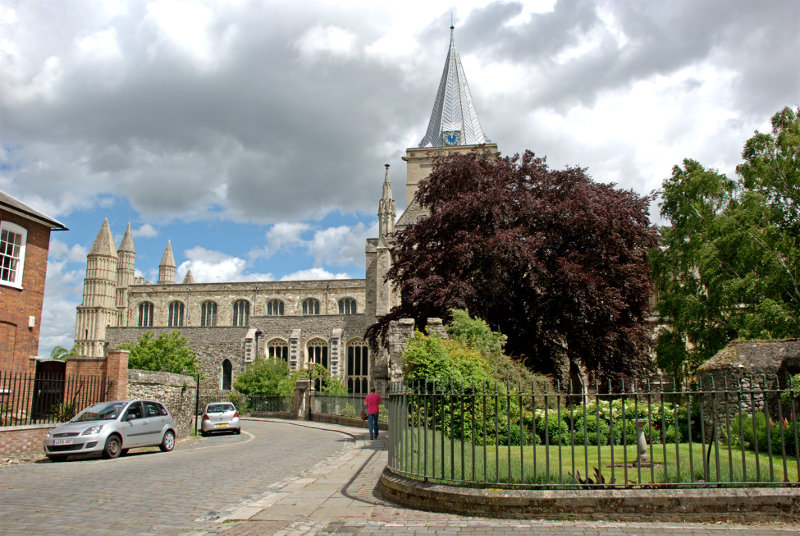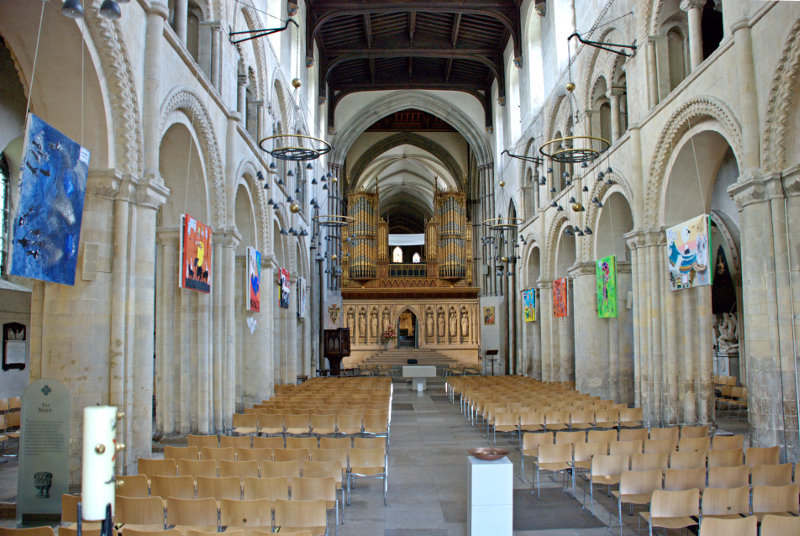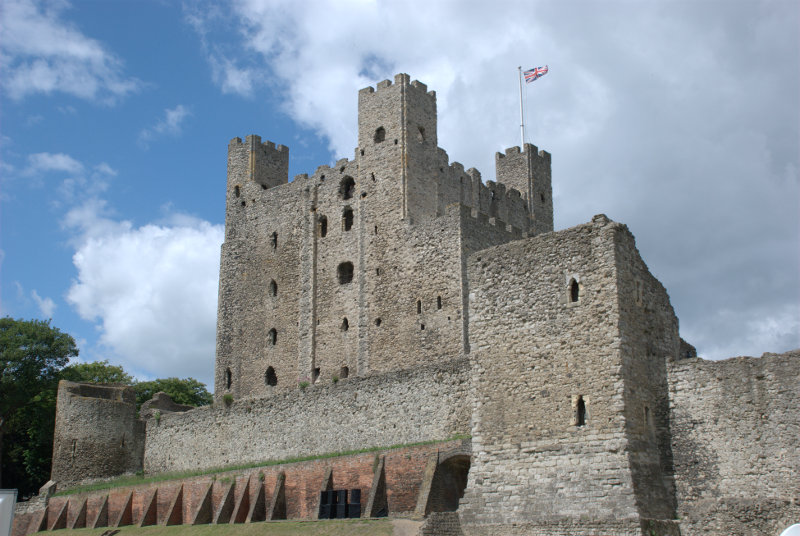Chains, Chapters and a Challenge
In the week starting Monday 18th July we were going to have the builders in only on Monday and Friday and as the weather forecast for Tuesday was sunny all day we did the obvious – a day trip out.
We thought that Hereford would be a good place to go because it's only an hours drive away and we had never been there. We duly arrived in Hereford without incident and walked towards the city centre. The temperature was forecast to go up to 88 F, which is rare for this country, but at this time of the morning it wasn't uncomfortable (yet).
You may realise that Hereford has a cathedral and has the River Wye running throught it (through the city not the cathedral). There is a modern bridge across the river which takes most of the traffic but a short way away is the old bridge, just one vehicle wide, which can be seen from the new bridge.
The 12th century Norman cathedral is obvious beyond the bridge and the bridge itself is also 12th century.
By this time it was around mid-day and it was starting to feel hot. This is now the middle of July and it's the first day this year I have felt able to wear a short sleeved shirt. Having seen the cathedral from the bridge we now made our way to see the cathedral close up.
It was much cooler inside which was a great relief. The fact that this is a Norman cathedral becomes obvious when one sees the arches on either side of the nave.
The font is also Norman and does look rather worn but the base is of a later date.
There is also a crypt under the Chancel.
Entry to the cathedral is free but this cathedral does have some unique features for which entry is chargeable but which we couldn't afford to miss. One of those features is the Chained Library.
This is how the library looked in the 1600s. The books are attached to their bookcase by a chain, which is sufficiently long to allow the books to be taken from their shelves and read, but they cannot be removed from the library itself. This would prevent theft of the library's books The practice was usual for reference libraries from the Middle Ages to approximately the 18th century. However, since the chaining process was also expensive, it was not used on all books. Only the more valuable books in a collection were chained.
One thing you may notice is that the books are the 'wrong' way round i.e. with the spines on the inner end. It was standard for chained libraries to have the chain fitted to the corner or cover of a book. This is because if the chain were to be placed on the spine the book would suffer greater wear from the stress of moving it on and off the shelf. Because of the location of the chain attached to the book (via a ringlet) the books are housed with their spine facing away from the reader with only the pages' fore-edges visible (that is, the 'wrong' way round to people accustomed to contemporary libraries). This is so that each book can be removed and opened without needing to be turned around, hence avoiding tangling its chain. To remove the book from the chain, the librarian would use a key.
The other unique feature at Hereford Cathedral is the Mappa Mundi (Map of the World).
Dating from 1300 it is the largest medieval map known still to exist. It represents the known world with Jerusalem being drawn at the centre of the circle, east is on top, showing the Garden of Eden in a circle at the edge of the world. Curiously, the labels for Africa and Europe are reversed, with Europe scribed in red and gold as 'Africa', and vice versa.
Great Britain is drawn at the north-western border (bottom left) and shown below enlarged. In the enlarged version Scotland is the island on the left with England to its right. Wales is shown as a separate island below England with Ireland shown as two islands below that.
Needless to say America and Australasia are not shown at all.
This is a reproduction showing the detail with more clarity.
We eventually decided we'd have to venture out of the cathedral to see more of the city and that's where the challenge is involved. The temperature must have reached its forecast maximum of 88 F because it was HOT! It was also very humid which didn't help at all and we found that we were walking in the shade at any and every opportunity. It is interesting to note that since 2001, extremes at Hereford have ranged from 92.5 F (33.6 C) during July 2006, to as low as 3.6 F ( -15.8 C ) during December 2010.
We walked away from the cathedral along Church Street going past The Grapes, a 16th century coaching inn, and into High Town.
High Town is the old market square and is now the main main shopping area in the city. It also features the Old House; a Jacobean (early 17th century) timber framed house which I must say is rather impressive. It is open to the public, entry is free, and it is worth a look inside.
That Hereford Bull is looking at me very suspiciously and, taking into account the look on its face, I don't think I shall hang around.
We were melting by this time and decided that if we could actually make it back to the car we would go home. We did and we did.


























